How Do Woodpeckers Use Their Tongues and Beaks?
Updated: Jan. 16, 2024
Learn all about a woodpecker uses its tongue and the beak to capture insects. Also find out how a woodpecker skull protects its brain.
On This Page
Woodpecker Tongue
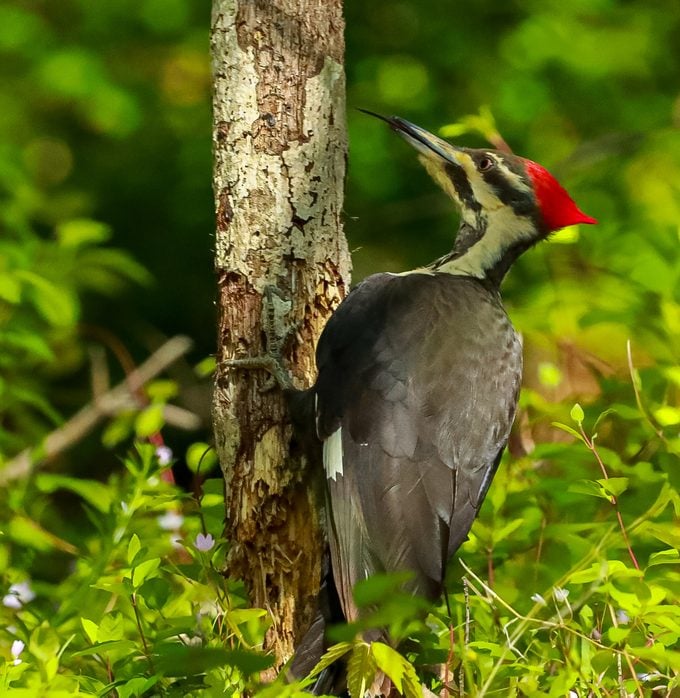
“I watched a red-bellied woodpecker stick its tongue out over and over. What was it doing?” asks Kimberly Miskiewicz of Raleigh, North Carolina.
Birding experts Kenn and Kimberly Kaufman say, “Red-bellied woodpeckers use their incredibly long tongues to forage for insects. They stick their tongues into tree cavities and crevices to probe for insects and grubs. Sometimes they even use them to drink syrupy sugar water from hummingbird feeders. Considering all the places they use their amazing tongues for feeding, they can get messy in a hurry. The bird you watched, sticking its tongue out repeatedly, was probably just cleaning its tongue after foraging.”
Did You Know: A red-bellied woodpecker’s tongue extends nearly 2 inches beyond the tip of its beak.
Check out the 4 best foods for attracting woodpeckers.
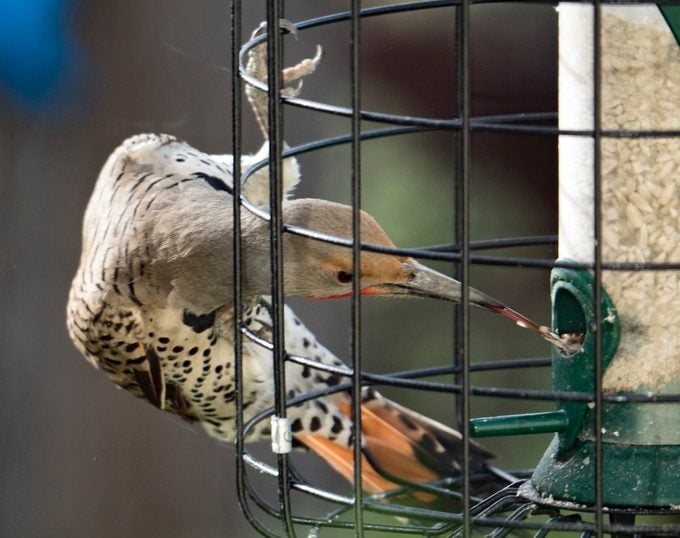
A woodpecker tongue is perfectly designed for scooping insects out of trees. It can be covered in a sticky fluid that helps capture bugs. The end of their tongue is also barbed to allow them to latch on to food. This makes retrieving insects a breeze for woodpeckers.
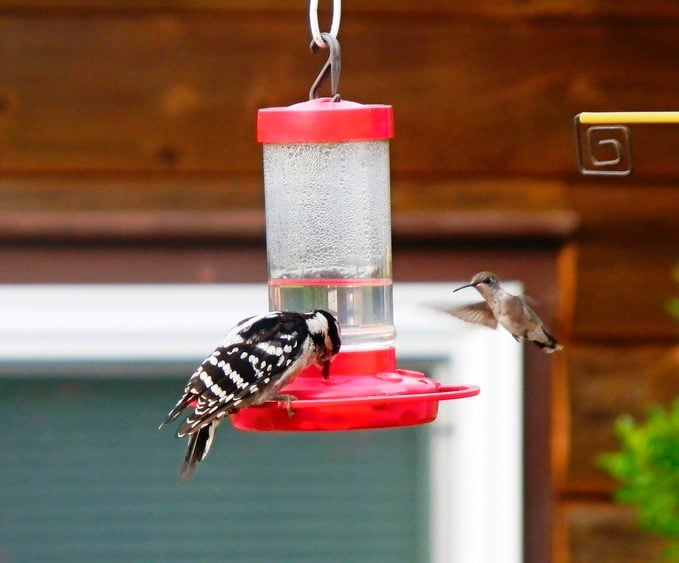
Sapsuckers have an extra advantage: Hairlike structures on their short tongues help these birds suck sticky, insect-laden sap from trees.
Check out more mind-blowing woodpecker facts you should know.
Woodpecker Beak, Skull and Brain
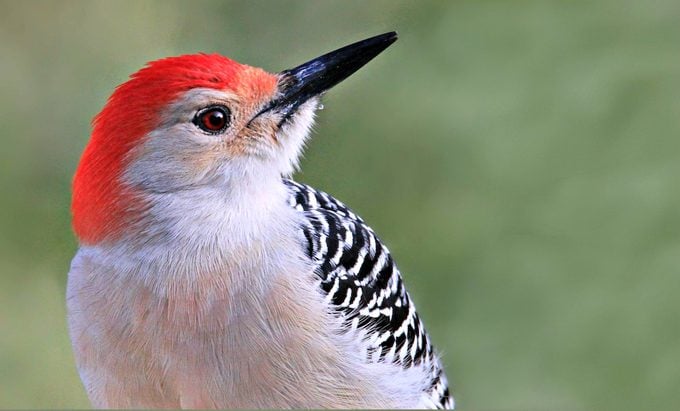
You’d think repeatedly slamming their heads into hard surfaces would cause brain damage or a concussion. Turns out woodpeckers have a special skull structure that protects their brains from the impact of hammering and pecking. Woodpeckers have a unique bone in their skulls that wraps around their brain. It works like a seat belt, protecting their tiny brains.
Additionally, a woodpecker’s strong beak is covered in layers of keratin. This is a protein that helps the beak stand up to compressing forces. A sharp chisel-like tip helps the birds hammer into trees.
Learn why woodpeckers peck and how to stop it.
Malformed Woodpecker Beak
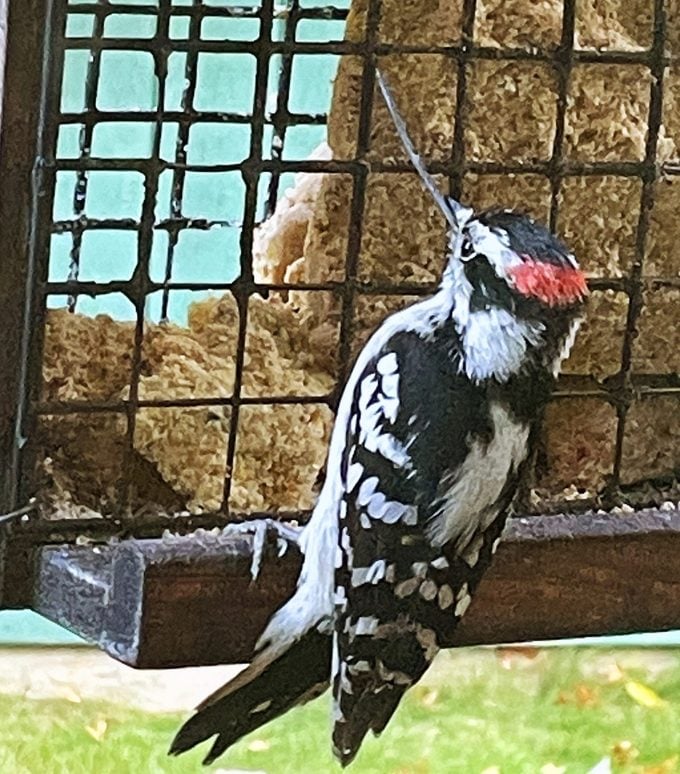
“This downy woodpecker (above) visits my suet feeder. What’s going on with its beak?” asks reader Patricia Arkwright of Poland, Ohio.
Kenn and Kimberly say, “On rare occasions, any kind of bird may develop a malformed beak, with one or both mandibles growing extremely long, curving in an odd way or crossing at the tips. If the bird can still manage to eat, it may survive for a long time. This downy woodpecker is an adult male, so it must have been living with this deformity for a while—in fact, your feeder may be playing an important role in its survival, since it would have trouble pecking on trees in the normal way.”
Next, find out if woodpeckers kill or damage trees.




















